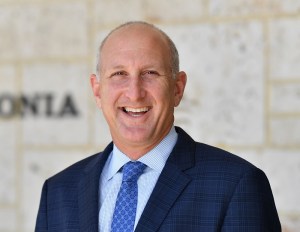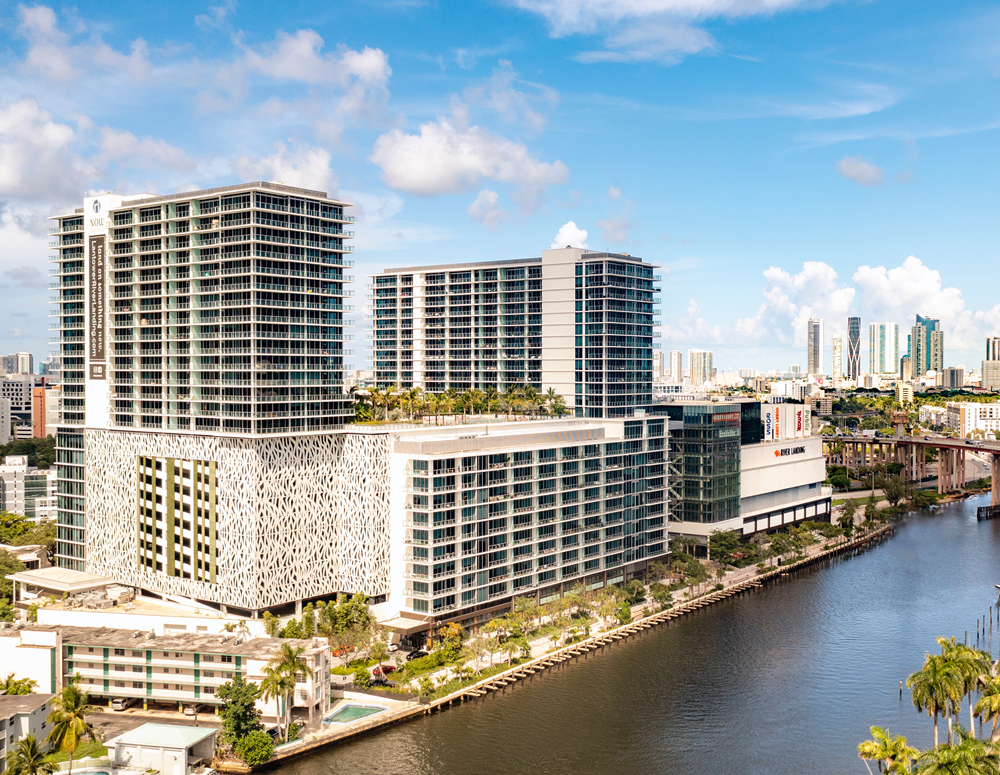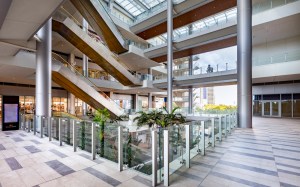How Lifestyle Offices Are Redefining Work-Life Balance
Andrew Hellinger of Urban-X on a new generation of developments that put office users’ satisfaction first.

Andrew Hellinger believes that many future office projects will be part of mixed-use developments. Image courtesy of Urban-X Group
In the dynamic landscape of modern workplaces, the concept of lifestyle offices has emerged as a transformative approach, tailored to meet the evolving needs of today’s workforce. These properties represent a unique evolution in commercial real estate, blurring the lines between work and lifestyle by mixing workspaces with leisure, amenities and community elements. The essence of these novel spaces lies in their capacity to prioritize employee well-being, foster a better work-life balance, and create engaging environments where work and unwinding seamlessly coexist.
In an interview with Commercial Property Executive, Andrew Hellinger, co-founder & principal of Florida-based Urban-X Group, explores the innovative realm of lifestyle offices, highlighting the elements that make the River Landing Shops & Residences project unique.
The 2.5 million-square-foot venture consists of 135,000 square feet of office space, approximately 360,000 square feet of retail, 528 market-rate apartments, more than 2,000 parking spaces and a landscaped riverwalk. Since its inauguration in 2020, it has significantly reshaped Miami’s commercial real estate, revitalizing one of the city’s oldest and most densely populated communities, and redefining the riverside environment.
READ ALSO: FTI Experts’ Hub—Brace Yourselves for a Full Return to the Office by 2028
Can you elaborate on the concept of lifestyle office and how River Landing embodies this idea?
Hellinger: With remote and hybrid work now commonplace, employers aim to incentivize in-person attendance via vibrant workplace settings. As employers prioritize environments that improve the quality of life for their workforce, the lifestyle office has emerged as a new asset class.
Unlike traditional Class A spaces, lifestyle office properties like River Landing Shops & Residences incorporate retail, dining, entertainment, residential and recreational amenities into the tenant experience, embedding office spaces within dynamic live-work-play communities. At River Landing, the office crowd might eat lunch along the river, work out at the gym, shop at on-site stores before heading home, unwind with a kickboxing class at the end of the day, gather with friends at Tanuki for drinks after work, or just relax on the riverfront.
Lifestyle offices acknowledge today’s workforce priorities—namely work-life balance over career sacrifice. Convenience, amenity-rich surroundings and experiential appeal are paramount.
What was the inspiration behind the River Landing concept? When did you alter the project to respond to changing workforce behaviors and expectations?
Hellinger: We were inspired by the expansive riverfront access—the Miami River is at the heart and soul of River Landing Shops & Residences, west of downtown Miami. The project sits on a 10-acre parcel along the shores of the Miami River and the location is hard to replicate anywhere in Miami. We wanted our guests to be immersed in the experience the river has to offer, and utilized welcoming landscaping and architecture to draw residents, customers and visitors out to the river.
When we were looking for opportunities for development almost a decade ago, we wanted to go to areas where other developers were not building just yet. We wanted our development to become a catalyst of change and spur economic activity.

Urban-X Group’s aim was to create a vibrant community centering around River Landing Shops & Residence, infusing vitality into the neighborhood’s riverfront. Image courtesy of Urban-X Group
Our goal wasn’t just to build a project. We wanted to build a community with River Landing Shops & Residence at the heart of it, pumping life into the neighborhood by providing quality retail, dining opportunities, cultural events, entertainment, market-rate apartments, Class A office space and, more importantly, access to the bustling river. Prior to developing the project, the area lacked a cohesive environment and had few conveniences despite being home to the country’s second-largest health district.
Originally, the plan didn’t include office space. During the pandemic, we realized that we had an opportunity to reimagine space that was originally allocated for a movie theater. We anticipated a shift in workforce behavior, which, combined with a near zero percent office vacancy rate in our submarket, made it an obvious choice to pivot and include office space.
In your experience, what types of employers have been most attracted to the lifestyle office concept, and what employee-focused benefits do they value the most?
Hellinger: There isn’t one specific industry or type of employer drawn to lifestyle offices. Any employer that cares about their employees’ work-life balance and overall well-being is drawn to the new concept. Every day, I look out my window and see office workers at River Landing hanging out in the atrium, sitting along the river and walking around the shopping center. Sometimes they take calls or eat lunch, but many times they just come out to have a break and let their mind flow freely to recharge.
READ ALSO: What’s Next for Office? SIOR Conference Report
That’s what a lifestyle office space is all about—the flexibility for employees to be able to actually take a break from work and not be stuck in a concrete jungle all day. The new generation of office workers has been vocal that they prioritize their personal time over all else, and bringing an enjoyable environment to them incentivizes employees to show up and do their best work.
Tell us more about the community impact you’ve seen as a result of this lifestyle office development. Can you provide examples of specific ways the lifestyle office class has positively impacted employee work-life balance and overall job satisfaction?

Lifestyle office spaces like River Landing differ from traditional Class A offices by combining retail, dining, entertainment and residential amenities, creating dynamic live-work-play communities around the office spaces. Image courtesy of Urban-X Group
Hellinger: When I talk to my tenants at River Landing, one of the main reasons they picked our office space was their desire to make work more enjoyable for their employees and encourage them to come into the office more often. They needed to give their team members a reason to leave their homes and drive to the office.
Rather than forcing a return-to-work policy, employers are figuring out ways to make their employees excited to come to the office. It is also fulfilling to see many of our office tenants hop on the Trolly or Metromover to avoid Miami’s congested roads and, in some cases, even arrive to work on a boat.
In what ways do you see this trend impacting the overall commercial real estate landscape in South Florida?
Hellinger: It is clear the pandemic truly changed the way employees view working from an office, as most are no longer willing to sacrifice their lifestyle for work. On the contrary, the Great Resignation has taught us that more people were willing to walk away from their jobs for opportunities more aligned with their expectations and quality of life.
Today, employees are more demanding in what they expect from their work life, and commercial real estate developers are responding with a new generation of mixed-use developments where office buildings no longer stand alone, isolated from the rest of the community.
Looking ahead, what do you anticipate for the future of the lifestyle office market in Florida?
Hellinger: While the demand for office space across the nation continues to generate negative press, South Florida continues to focus on improving the office experience to welcome businesses expanding or relocating to our region. I have no doubt that many of the future office projects will be part of mixed-use developments where people will be able to work, live and play all year round. The new generation of workers expect that.







You must be logged in to post a comment.